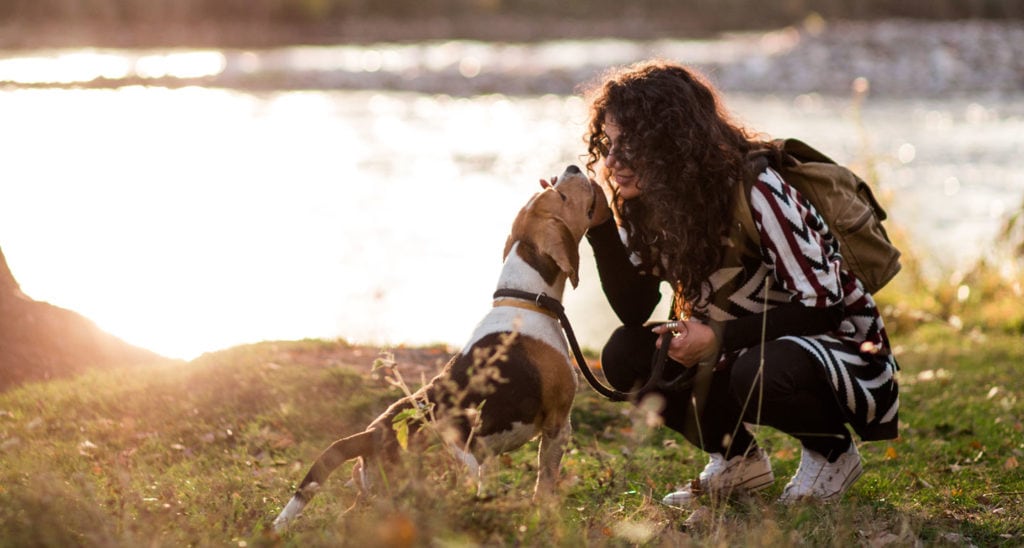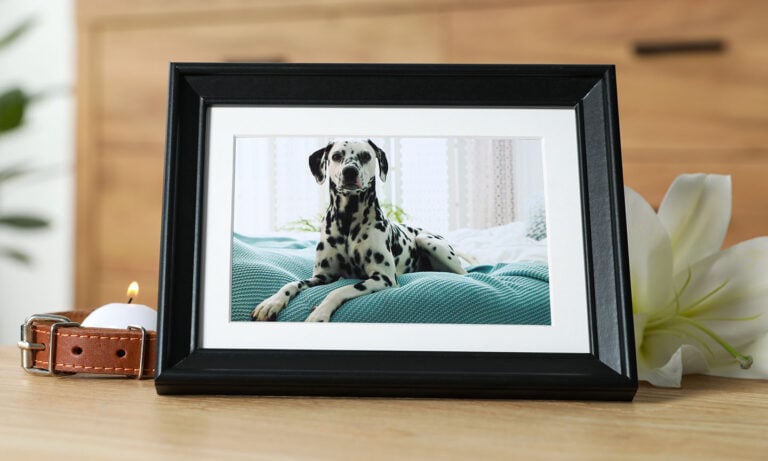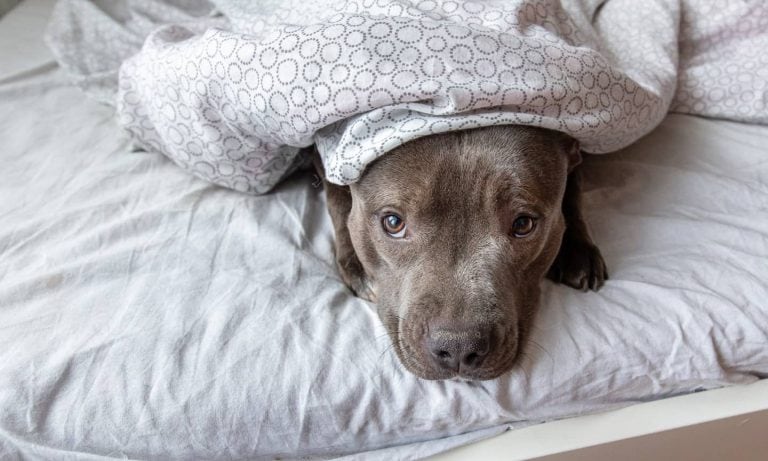Approximately half a million Americans suffer from seasonal depression, also known as Seasonal Affective Disorder (SAD). You may be familiar with this form of depression that has a seasonal pattern, and wouldn’t wish it upon anyone—let alone your best fur friend! But wait—is that something you need to worry about as a pet parent? Can dogs and cats get seasonal depression?
If your pet just doesn’t seem to be themselves come winter, it turns out that, yes, it could be because of Seasonal Affective Disorder. In fact, it’s actually pretty common: About one-third of pet parents report seeing a shift in their dog’s mental state and energy during the winter, according to veterinarian Dr. Albert Ahn, DVM, Veterinary Advisor for Myos Pet, a senior pet healthcare company in Cedar Knolls, New Jersey.
“Considering there are about 90 million dogs owned in the U.S., that equates to around 30 million in total, which would suggest that it is quite common,” Dr. Ahn says.
Don’t panic though! We found out exactly what you need to know about seasonal depression in pets—including the signs, when to call your vet and the not-so-scary treatment options.
What Is SAD—And What Causes It?
In humans, Seasonal Affective Disorder is a type of depression that correlates to the change in seasons, says Kandace L. Nollie, LMHC, a licensed mental health counselor and program director at Chrysalis Health in Brandon, Florida. It most often occurs in winter, but rare cases can happen in the spring or summer months.
While the exact cause can vary and is often unknown, it can sometimes be caused by changes in sunlight, sleep patterns and shifting levels of melatonin—a chemical known to affect sleep (which can be caused by those changes in sunlight, in and of itself).
Treatments for SAD in humans may include using special lights to counter decreases in sunlight, medication and/or cognitive behavioral therapy (a common type of talk therapy), according to Cleveland Clinic.
Signs of Seasonal Depression in Dogs and Cats
While there isn’t much research available about seasonal depression in pets, experts and pet parents alike think humans and their furry friends are impacted in similar ways by those factors above.
For example, if you notice that your pup seems more sluggish and sleepy once winter sets in, shifting melatonin levels—and SAD—could possibly be at play.
“Dogs’ behavioral changes observed during the winter months may very well be attributed to an increase in melatonin due to the shorter daytime hours, which has been linked with SAD in humans,” explains Dr. Ahn.
So, what should pet parents be on the lookout for?
Dr. Ahn says the most common symptoms of SAD in pets are:
- Less energy and more lethargy
- Changes in both eating and behavior. These may include loss of appetite, overgrooming or excessive vocalizing. (You can see more signs of stress in pets here)
- A significant increase in time spent sleeping
“The decrease in energy and increase in a sedentary lifestyle may also lead to weight gain during these months,” Dr. Ahn adds.
Since weight gain can cause a whole host of health problems, and you of course want your fur baby to be as happy and comfortable as possible, it’s best to nip this potential problem in the bud ASAP!
When to Call Your Vet
Any time you’re concerned about a change in your pet’s behavior, it’s a good rule of thumb to ALWAYS call your vet just to be safe. The changes listed above can be caused by any number of factors, and you’ll want to get to the bottom of it to ensure it’s nothing serious.
According to Dr. Ahn, diagnosing SAD in pets can be a challenge. After all, our dogs and kitties can’t verbalize how they’re feeling like we can. But don’t panic—your vet will listen to your concerns, evaluate your fur baby and, if necessary, suggest treatment protocols.
“Whether SAD is to blame or not, mood and behavior changes are very real and should be addressed,” says Dr. Ahn.
Treatments for Seasonal Affective Disorder in Pets
While treating seasonal depression in humans can include therapy and/or medication, treating your pet’s SAD usually just means simple lifestyle changes and supplements.
Dr. Ahn has a few suggestions that can make a big difference:
- Keep your home well-lit. Open blinds to let the sun in and turn on lights in rooms where your pet often hangs out.
- Spend more time outside. Even though it’s getting colder, try to get your pet outdoors. Dr. Ahn says the change of scenery, fresh air, natural light and movement is great medicine. So, throw a sweater on them to keep them warm, and get out there!
- With your vet’s approval, try a supplement. Ahn suggests an omega-3 supplement with fish oil (it can aid in cognitive function), as well as a probiotic since a healthy gut often means improved behavior and wellbeing. Consider the bacon-flavored Amazing Nutritionals Omega 3 Chews and Zesty Paws Probiotic Bites (it touts both natural digestive enzymes and a yummy pumpkin flavor).
Dr. Ahn also recommends MYOS Canine Muscle Formula Dog Supplement, which contains Fortetropin, a natural compound made with egg yolk which can help keep your dog’s muscles well-toned if their activity level has decreased.
In addition to the above, spending quality one-on-one time indoors can help keep your pet’s spirits up and help alleviate their seasonal depression, says Dr. Ahn.
Here are a few great ways to spend a cold winter day indoors with your pet:
- Play a game. Here are some quick, fun, 15-minute games to play with your pup.
- Stream a pet-friendly movie. Check out our recommendations here.
- Bake some yummy treats. Try these homemade Turkey Triangles cat treats or peanut butter dog biscuits.
- Build your cat a cardboard box maze. (Because we know you’ve been looking for a way to use all those Chewy boxes!)
- Plan a digital detox weekend When you disconnect from technology, you end up spending more time with your pet.
It’s easy to worry when your fur baby isn’t acting like themselves. But by taking some preventative steps in your home now before the days start to get even shorter, spending more time together and keeping your vet in the loop, you can help both yourself and your pet feel so much better.
Share:












